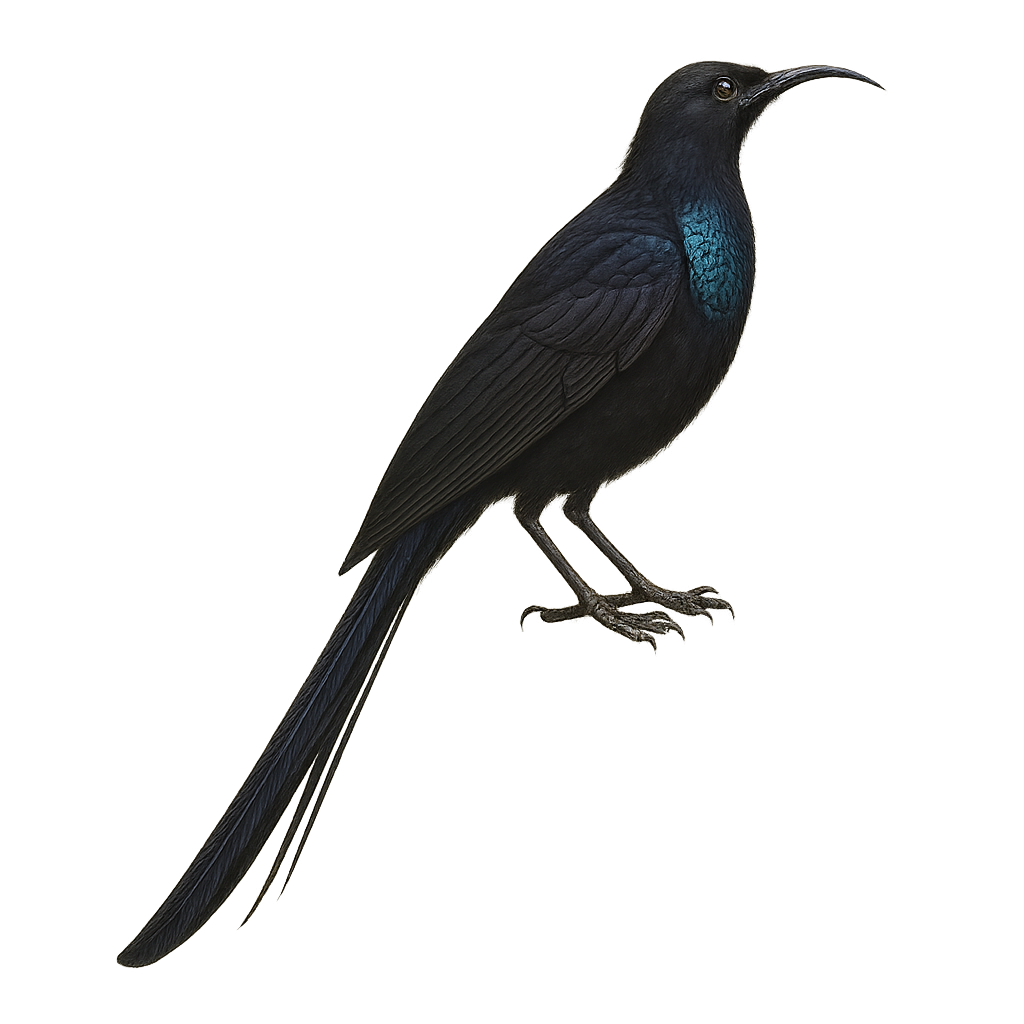Your wildlife photography guide.
Explore the black sicklebill in detail, study its behavior, prepare your shots.
Where to observe and photograph the black sicklebill in the wild
Learn where and when to spot the black sicklebill in the wild, how to identify the species based on distinctive features, and what natural environments it inhabits. The WildlifePhotographer app offers tailored photography tips that reflect the black sicklebill’s behavior, helping you capture better wildlife images. Explore the full species profile for key information including description, habitat, active periods, and approach techniques.
Black Sicklebill
Scientific name: Epimachus fastosus

IUCN Status: Vulnerable
Family: PARADISAEIDAE
Group: Birds
Sensitivity to human approach: Suspicious
Minimum approach distance: 10 m
Courtship display: June to August
Incubation: 18-21 jours
Hatchings: June to September
Habitat:
Tropical forests, mountains, rainforests
Activity period :
Primarily active during the day, with peak activity in the morning and late afternoon.
Identification and description:
The Black Sicklebill, or Epimachus fastuosus, is a bird of the Paradisaeidae family, renowned for its spectacular plumage and elaborate courtship displays. Native to New Guinea, it primarily inhabits montane tropical rainforests. Males are distinguished by their glossy black plumage with metallic sheens and long sickle-shaped tails. They perform complex dances to attract females, who are duller and brown. These birds primarily feed on fruits and insects. Their habitat is threatened by deforestation, leading to a decline in their population. They are currently classified as vulnerable by the IUCN.
Recommended lens:
400 mm – adjust based on distance, desired framing (portrait or habitat), and approach conditions.
Photography tips:
To photograph the Black Sicklebill, it is advisable to use a telephoto lens of at least 400mm to capture the details of its plumage without disturbing it. Opt for early morning or late afternoon hours when the light is soft for well-exposed images. Be patient and discreet, as this bird is suspicious. Use a tripod to stabilize your camera and wait for the male to perform its courtship dance to capture unique moments.
The WildlifePhotographer App is coming soon!
Be the first to explore the best nature spots, track rutting seasons, log your observations, and observe more wildlife.
Already 1 432 wildlife lovers subscribed worldwide

